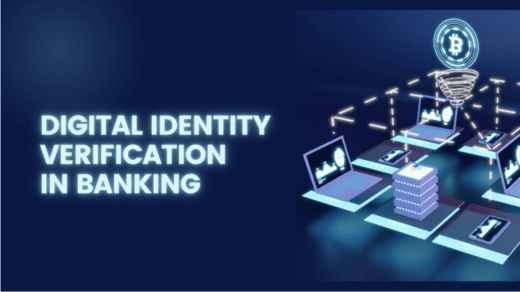Digital identity verification in banking

Digital identities go beyond usernames and email addresses it’s an integration of multiple factors that give a clear identification of an individual. It includes personal data like date of birth, address, four or six-digit security number, as well as biometrics, facial recognition, or fingerprint patterns. There are different methods for authentication of personal, often secret codes or actions that confirm it’s you, like passwords, PINs, or one-time passcodes. The structure starts building when traditional identities give way to digital ones. Digital identity is available in the cloud also it is accessible at any time from anywhere. This transition is convenient and efficient but also brings challenges and responsibilities. As digital identities become the standard ensuring their accuracy and protection has become primary. Short-term personal loan financing has involved prioritizing customer convenience, speed, and security.
The Need for Digital Identity Verification
The digital landscape has significantly transformed individual interactions through different mediums, especially in the financial sector. According to the studies conducted between 2015 and 2022, millennials led the change in mobile banking adoption in the United States, with the new generation following it closely. By 2022, an incredible 62.3 million millennials had started using mobile banking, a figure that started to rise. But it’s in the hands of upcoming Generations they hold the most promise. Mobile banking users from this generation are compared to skyrocket, hitting 33.7 million in 2023 and 47.8 million by 2026 according to officials. Traditional identity verification methods for short-term personal loans include physical documents and in-person checks, and it’s a time-consuming process. To manipulate Biometric authentication using facial recognition, and fingerprint scanning methods with the help of Artificial intelligence, machine learning algorithms, and Real-time data analytics.
Benefits of Digital Identity Verification
FinTechs and financial institutions are often protectors of sensitive information of individuals, and the digital identity verification process is beneficial and essential for customers. At the forefront of benefits stands for individual security. The digital banking identity verification process acts as a defense against spam. Users need to provide documents for identification and individuals will undergo quick document verification, financial institutions will make sure they interact with genuine customers. It’s a proactive measure taken to reduce the risk, to adding layers of checks and balances makes unauthorized access increasingly challenging for potential fraudsters. digital identity verification is essential for the long-term resisting of risk. Threats like identity hacking and financial spamming activities are in the digital depths and are ready to strike. The technical benefits are visible to users and the advantage of digital identity verification is improved customer experience. A seamless verification process means users spend less time for verification and more time enjoying the services of short-term personal loans. It balances the security and convenience of a customer and it builds trust. Users will appreciate when financial sectors take their security seriously but without compromising any kind of customer service. In a competitive financial market a smooth, hassle-free experience can make a difference in recalling and attracting individuals.
The Role of Digital Identity Verification in Short-Term Personal Loans
One of the foundational verification methods involves scanning government-issued identity documents like Aadhar cards, passports, or driver’s licenses. This ID document verification work adds an essential and securing layer of verification, it’s a protection or barricade from identity fraud for providing short-term loans. Email verification isn’t just about confirming a working email address it’s about tying a digital bond to an individual. By sending a one-time code or link to a provided email, financial institutions can make sure the user can access the provided email account. Facial recognition and fingerprint scanning secure the unique biological traits of an individual to confirm their identity. These methods are rooted in the very biology of a person, making it hard to produce a fake one.
Mobile devices are almost an extension of the individual, phone verification has become the primary step of digital banking. Delivering a verification code to the provided number ensures the validity of the phone number and confirms the ownership by the individual. Modern verification processes also recognize the activities of customer leave on social media platforms. Digital banking provides options for customers to link their profiles or accounts from platforms like Facebook or LinkedIn. Cross-referencing the information on profiles with the provided details means financial institutions will get additional data verification points and it’s not a standalone method of verification, social verification will make sure confidentiality in a digital ID verification process when used with others.




